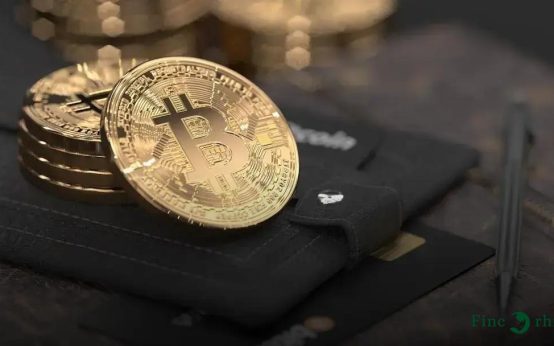Are you intrigued by the world of NFTs and eager to create your own collection? In this guide, we’ll explore how to create and sell your own NFT collection, uncovering the potential of digital assets and the necessary steps to succeed. NFTs, or non-fungible tokens, are unique digital items verified on a blockchain, and they have revolutionized the world of collectibles and art. From understanding the concept to selecting the right platform and marketing your creations, let’s dive into the detailed process of launching and profiting from your NFT collection.
Understanding NFTs and Their Potential
NFTs, or non-fungible tokens, revolutionize the digital art and collectibles market. These unique digital assets, built on blockchain technology, guarantee ownership and authenticity. Understanding how NFTs function is crucial for anyone looking to create and sell a collection.
Uniqueness and Ownership
Each NFT is distinct, representing a unique piece of digital art or media. Unlike cryptocurrencies like Bitcoin or Ethereum, NFTs are not interchangeable. This uniqueness is verified through the blockchain, which ensures transparency and proof of ownership.
Potential Benefits
The potential benefits of NFTs include empowering creators to monetize their work without relying on traditional methods. Artists, musicians, and other creators now have the opportunity to reach global audiences directly and earn royalties on future sales of their work.
Investment Opportunities
The growing market for NFTs has attracted significant investor interest. As digital assets, they offer new avenues for investment and diversification. Investors can capitalize on the popularity of NFTs by collecting pieces from emerging artists and established creators.
Understanding NFTs and their potential is key for building a successful collection. With the right strategy and creativity, NFTs can offer exciting opportunities in the world of digital assets.
Steps to Create Your NFT Collection
To start the creation of your NFT collection, the first essential step is to pick a theme or concept that resonates with your vision. Ask yourself: what story or idea do I want to convey through my NFTs?
Research and brainstorming: Conduct thorough research on existing NFT collections to identify trends, gaps, and opportunities. Create a mood board or sketch your ideas to solidify your concept.
Art creation: Once the theme is decided, it’s time to design the actual artwork for your NFTs. You can use digital art tools like Adobe Photoshop, Illustrator, or Procreate to create visually appealing pieces. Consider the format, such as images, video, or even audio, depending on your concept.
Metadata preparation: Each NFT comes with metadata that helps describe the item. This includes titles, descriptions, properties, and any unlockable content you may want to offer. Ensure that this information is accurate and compelling to attract potential buyers.
Minting your NFTs: Minting is the process of converting your digital files into a blockchain-based asset. Choose a platform, based on your research, that best suits your art style and target audience. Follow the platform’s specific minting process carefully.
Remember, creating a distinct and engaging NFT collection demands both creativity and strategy. Pay attention to the details, experiment with different formats, and stay true to your unique artistic voice.
Choosing the Right Blockchain Platform
When embarking on the journey to create and sell your NFT collection, one of the pivotal choices you’ll face is selecting the most suitable blockchain platform. Each blockchain has unique characteristics that can greatly affect your NFTs’ success. It’s crucial to examine factors such as transaction costs, speed, and community support.
Some popular blockchain platforms for NFTs include Ethereum, known for its robust developer community and widespread adoption, ensuring your NFTs gain visibility. However, its gas fees can be high during peak times. Solana offers faster and cheaper transactions, making it attractive for creators who prioritize cost-effective solutions.
Meanwhile, Binance Smart Chain provides competitive fees and is gaining traction due to its efficiency. Assess the level of decentralization each platform offers; a more decentralized network might offer better security for your assets.
Another consideration is the ease of minting NFTs on the platform. You can leverage platforms that offer smart contract capabilities and user-friendly interfaces to facilitate a seamless minting process. Ensure the blockchain supports the interoperability of NFTs so that they maintain value and function across different platforms.
Take into account the platform’s environmental impact. Some blockchains are working towards sustainability by reducing their carbon footprint, which can be an essential aspect for environmentally conscious creators.
Choosing the right blockchain platform for your NFTs will not only enhance your project’s feasibility but also ensure you align with the right technological infrastructure to support your goals.
Marketing Strategies for Your NFT Collection
The NFT universe is brimming with opportunities, but a robust marketing strategy is essential to ensure your collection shines. Start by identifying your target audience. Understand the demographics and preferences of potential buyers. Consider platforms where your audience spends most of their time, whether it’s social media, online forums, or NFT marketplaces.
Next, leverage social media marketing. Platforms like Twitter, Instagram, and Discord are popular among NFT enthusiasts. Regularly share updates and engage with your community. Use visual storytelling to showcase your NFTs with compelling graphics and videos.
Collaborate with influencers and NFT artists. Partnerships can significantly boost visibility. Influencers with a strong following can share your work with a wider audience, while collaborations with other artists can attract their fans to your collection.
Consider hosting giveaways or exclusive previews. Offering limited-time sneak peeks or freebies can generate excitement and anticipation. This strategy can also help in building an email list of interested buyers.
Additionally, ensure you have a visually appealing and user-friendly website. Your website should provide detailed information about your NFTs, the story behind them, and your overall artistic vision. Include a clear call to action to guide visitors on how to purchase or connect with you.
Don’t forget the power of content marketing. Create blog posts, videos, and podcasts that not only promote your NFTs but also educate your audience on their value and potential. This establishes you as a credible source in the NFT space.
Finally, actively participate in NFT communities. Engage in discussions, provide value, and stay updated with trends and news. Building trust and rapport within these communities can lead to long-term relationships and sales.
Ensuring Success in NFT Sales
Selling NFTs requires strategic planning to ensure success. Begin by establishing a clear value proposition for your NFT collection. This involves highlighting the uniqueness and utility of your NFTs, ensuring potential buyers understand what distinguishes your pieces from others.
Next, consider the importance of pricing. Setting the right price for your NFTs is crucial; price them too high and you might deter buyers, too low and you may undervalue your work. Research the market and consider pricing strategies that reflect both the effort invested and the market demand.
Engage with Your Audience: Build a strong community around your NFT collection. Utilize social media platforms and NFT forums to foster discussions and build relationships with potential buyers. This includes being active in spaces where collectors and NFT enthusiasts gather.
Leverage the power of scarcity and exclusivity. Limited drops or special edition NFTs can create urgency and desire among buyers. Highlight any elements of rarity in your pieces to attract collectors looking for unique finds.
Don’t forget to offer excellent customer service, responding quickly and effectively to inquiries. This builds trust and can lead to repeated sales or referrals.
Monitor and analyze your sales data. Understanding patterns and preferences within your audience allows you to adjust strategies for future collections, helping to optimize your sales potential.





